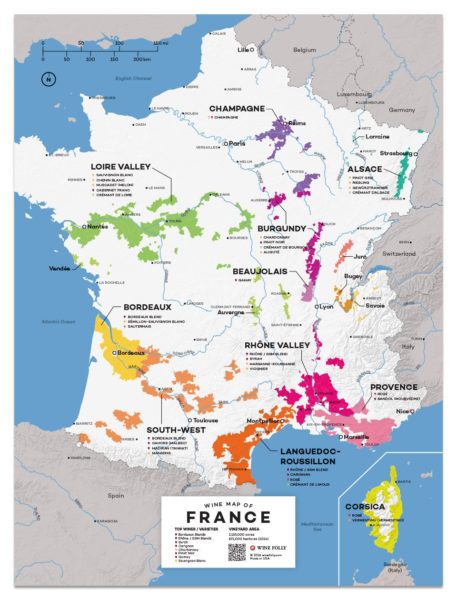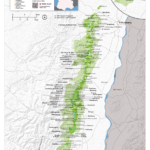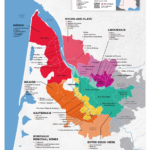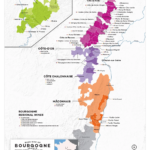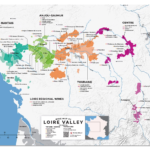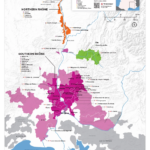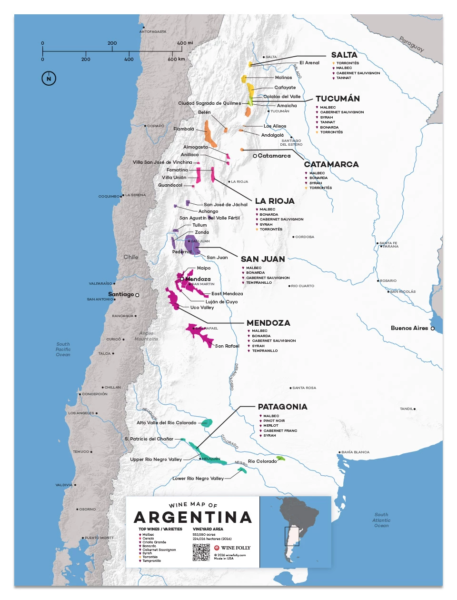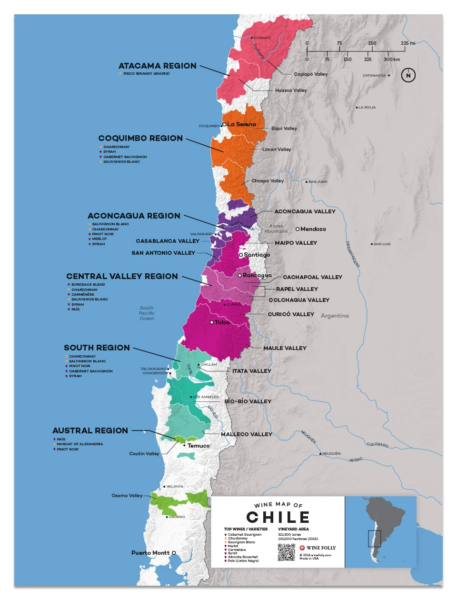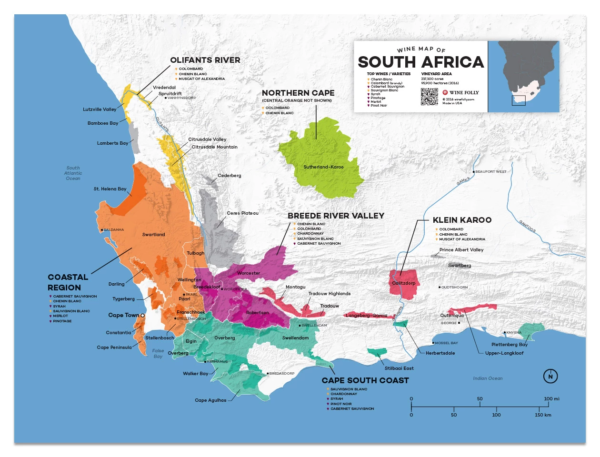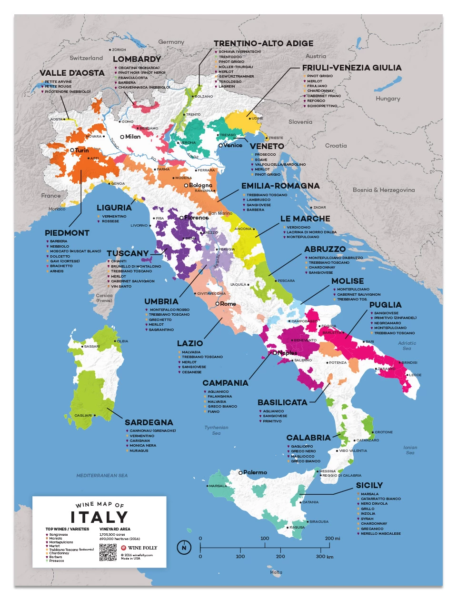Languedoc-Roussillon
Grenache Blend: The Languedoc-Roussillon regions excel at blended red wines, which include varieties like Grenache, Syrah, Mourvèdre and Carignan. Imagine bold red raspberry, licorice, and grilled plum with a somewhat herbal oregano kick. Wines labeled with Corbières, Saint-Chinian, Fitou, Côtes du Roussillon Villages and Collioure are all great examples of Languedoc-Roussillon red blends.
Carignan: One of the most underrated red grapes of the Languedoc-Roussillon, Carignan offers up notes of dried cranberry, raspberry, licorice, and cured meats. Look for old vine (“vieilles vignes”) Carignan from Côtes Catalanes, Faugères, and Minervois.
Bordeaux
Left Bank Red Bordeaux: A bold, dry red using Cabernet Sauvignon and Merlot in the blend, with flavors of black currant, graphic, mint, and gravelly-tobacco notes. This is a more rustic style of Cab-Merlot (compared to Napa Valley) that’s known to age well for 20+ years. Look for wines from the appellations from Graves or Médoc including Pauillac, Saint-Julien, Saint–Estephe, Margaux and Pessac-Leognan. Cru Bourgeois is a classification system for wines from the Médoc (or Left Bank) that contains 245 châteaux who have achieved their Cru Bourgeois status based on quality requirements.
Right Bank Red Bordeaux: A slightly softer, rustic red made with mostly Merlot and Cabernet Franc, with flavors of black cherry, tobacco, and mint. Look for wines from Pomerol, Saint-Émilion, and Fronsac.
White Bordeaux: Less the 10% of the region’s production is dedicated to White Bordeaux which is a zippy blend of Sauvignon Blanc and Sémillon. Wines offer up pink grapefruit, green melon, and beeswax notes. The area between the 2 major rivers of Bordeaux (the Garonne and Dordogne rivers) is called Entre-Deux-Mers. Entre-Deux-Mers and Pessac-Léognan offer great examples.
Sauternais (sweet whites): An intensely sweet white wine (perfect for dessert or pairing with Foie Gras). The Sauternais appellations include Sauternes, Barsac, Cérons, and Cadillac among others.
Cru Classifications of Bordeaux
There are several classifications of Bordeaux wines across the region. Several are worth investigating to identify great regional producers.
Crus Artisans Small artisan producers of the Médoc
Crus Bourgeois For producers in the Médoc based on quality assessment of regional character
Crus Classés de Graves A classification of producers in Graves from 1953 (amended in 1959)
Crus Classés de Saint-Émilion A classification of top quality producers in Saint-Émilion that is revisited every 10 years.
Crus Classés de 1855 A 5-tier classification of producers in Médoc and Graves (and sweet wines from Sauternes and Barsac) from 1855. One producer moved up a tier in 1973
Rhône Valley
Syrah: There are 2 major areas in the Rhône Valley and the smaller region that runs along the Rhône river is where you’ll find Syrah. Northern Rhône Syrah offers a much more savory profile with notes of black olive, plum, and dried green herbs. Look for St. Joseph and Crozes-Hermitage.
Grenache-Syrah Blend: The Southern Rhône is famous for its blends of primarily Grenache, Syrah, and Mourvèdre. Wines exude ripe raspberry, plum and dried lavender with a smoky overtone. The Côtes du Rhône Villages, including Vinsobres, Vacqueyras, Gigondas, and Rasteau, are all quite worthy. The most sought after wineries are mostly found in the sub-region of Châteauneuf-du-Pape.
Loire Valley
Sauvignon Blanc: A lean and herbal style of Sauvignon Blanc with flavors of thyme, lime peel, honeydew melon, and grass. Wines are labeled Sancerre, Pouilly-Fumé, Touraine, Reuilly, Quincy and Cheverny (for classic 100% Sauvignon Blanc).
Chenin Blanc: In the middle Loire Valley is where you’ll find awesome Chenin Blanc wines that range in style from dry to sweet and still to sparkling. Flavors range from delicate notes of flowers and apricots from Vouvray and Montlouis-sur-Loire, to rich applesauce-like flavors from aged Savennières.
Muscadet (white): The perfect white for shellfish, clams, and mussels hailing from the western maritime region of Nantes in the Loire. Wines are bone-dry with subtle notes of sea shell, lime, green apple, and pear skin. Muscadet Sèvre et Maine is the most popular appellation for Muscadet.
South West
Malbec: Despite the region’s large size, the wines of South West are still being discovered outside of France. One notable find is Cahors, which is the origin place of Malbec. Wines are medium-bodied with notes of cherries and plums, with softer tannins and subtle notes of dried leaves.
Tannat: A rare wine with exceptionally bold tannins that’s said to be the wine of longevity. Wines offer black currant, licorice, and smoke, with drying tannins. Seek out Irouleguy and Madiran.
Champagne
Sparkling Blanc de Blancs: Blanc de Blancs is made with 100% Chardonnay grown in Champagne. Wines offer apple, lemon, and beeswax notes with crisp acidity and creamy bubbles.
Sparkling Blanc de Noirs: Made with the two red grapes of Champagne (Pinot Meunier and Pinot Noir), Blanc de Noirs or “white of blacks” produces wines with more body and notes of white cherry, mushroom, lemon, and raspberry.
Bourgogne
Pinot Noir: The origin place of Pinot Noir produces a rustic and bold style of Pinot Noir with notes of cranberry, hibiscus, rose hip, and a dusting of earthy herbs. Bourgogne Rouge is a great place to start, but you can find greater quality from the Bourgogne Villages.
Oaked Chardonnay: The origin place of Chardonnay produces the richest styles from the regions in the Côte de Beaune. Read more about white Burgundy.
Unoaked Chardonnay: A lean style of Chardonnay with notes of quince, starfruit and sometimes passion fruit. Most notably you’ll find this style from Chablis, but Pouilly-Fuisse and the regions in Màcon also do a great job.
Beaujolais
Gamay: A region devoted to a single variety (Gamay) that offers seductive aromas of plum, cherry, violet, and peony. The region produces a ton of Beaujolais Nouveau, but the best wines to seek out are from one of the 10 Beaujolais Crus.
Alsace
Riesling: A dry style of Riesling that is quite refreshing as it is haunting with its sometimes smoky aromas. All 51 Grand Cru vineyards specialize in this grape.
Pinot Gris: A sweeter style of Pinot Gris that explodes with apricots, limes, and honeyed richness.
Gewürztraminer: One of the most aromatic wines on the planet with notes of rose water, lychee, and perfume. Wines are richer in style, taste just off-dry (although most are dry) and are best enjoyed within a year or two of release.

